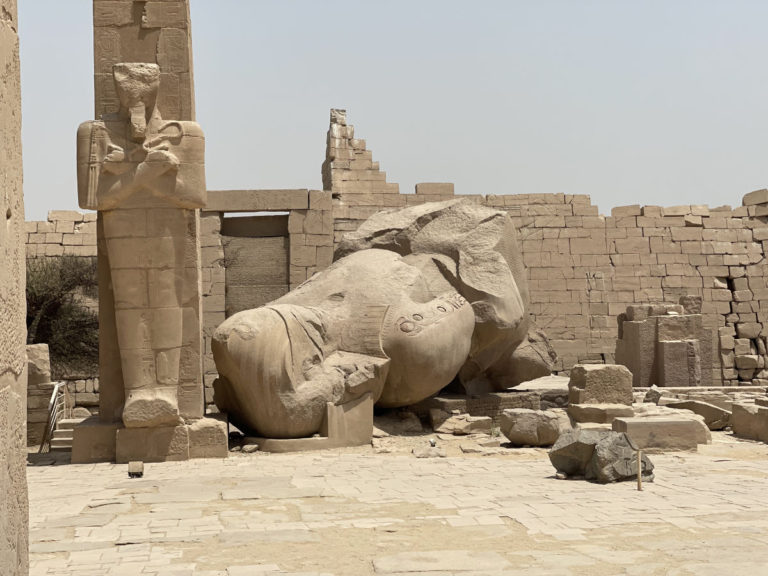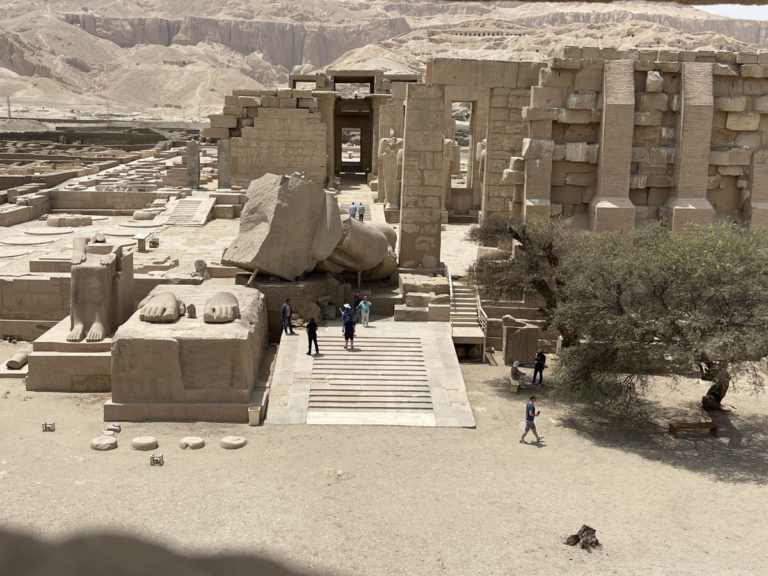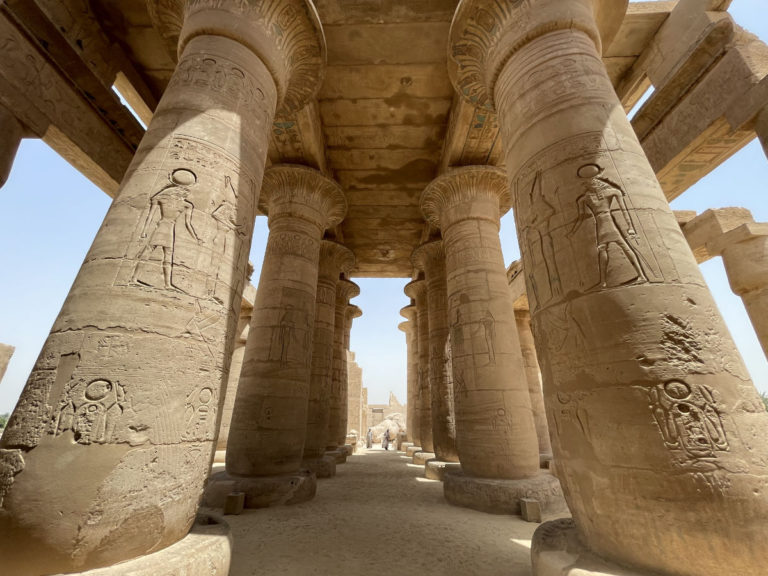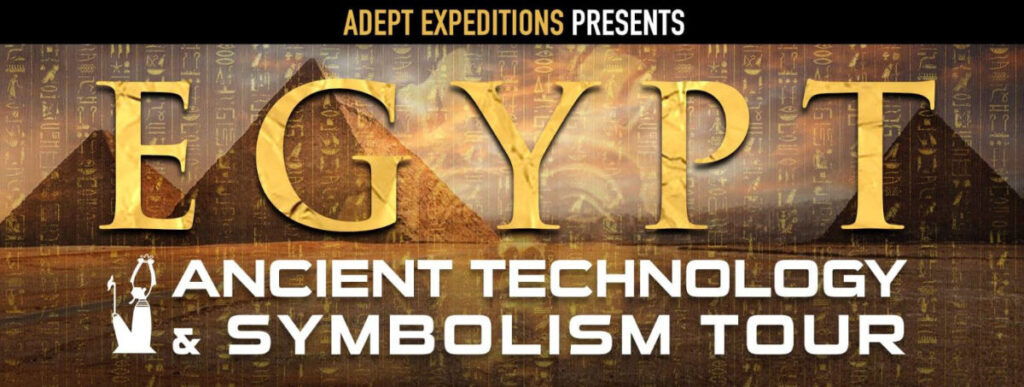
The most Complete Guide for visiting Ramesseum

Ramesseum
Ramses II, the third pharaoh of the XIX dynasty, was crowned in 1279 B.C.E. “as king of Egypt on the throne of Horus of those who are alive, without there ever being a repetition of him”, according to the sources of the time. During his reign, he undertook an unprecedented building program. The country was filled with new religious buildings, in which the various names of the sovereign appeared, as well as the image of the king dispensing justice, honoring the gods, or on the battlefield, as the architect of real or supposed victories.
Among all the constructions of Ramses II, there was one that was especially dear to him. It was erected precisely in Thebes, on the western bank of the Nile, near the pharaoh’s tomb in the Valley of the Kings. Today we know it as Ramesseum
The Ramesseum is the name given to the funerary temple erected by Ramses II, and located in the necropolis of Thebes, on the west bank of the Nile River, opposite the city of Luxor, next to the small temple dedicated to his mother Tuya.
Interesting Facts
- The name was coined by Jean-François Champollion, who visited its ruins in 1829 and was the first to identify the names and titles of Ramses on its walls.
- The temple’s original name was Usermaatra Setepenra's Million Year House. (Usermaatra Setepenra Ramses Meriamon was his full name)
- The works of the Ramesseum lasted almost twenty years, from the beginning of the reign of Ramses until its conclusion in the year 21.
- It's known that some temple blocks from the 18th dynasty were reused for construction.
The Ramesseum is open:
Winter 7am – 5pm
Summer 6am – 7pm
The admission fee is 25 EGP
Best time to visit Ramesseum is from 3:00 pm to 5:00 pm
The estimated tour time is approximately 1 hour.
Living in Luxor Egypt vlog
(29:46 minutes)

Learn about Egypt and Luxor the Valey of the Kings Karnak Ramesseum the list goes on...
You shouldn't miss...
The Valley of the Kings
The Valley of the Kings
Karnak
Medinet Habu
More about Ramesseum
Recorded History
As in other temples, Ramses had recorded in the Ramesseum episodes of the battle of Qadesh and other clashes against foreign peoples. Likewise, he reproduced the parade of some of his numerous sons and daughters.
Some scenes in the Ramesseum show the pharaoh together with various gods of the Egyptian pantheon, and even he himself is represented as a god.
Indeed, the royal buildings of the New Kingdom not only showed the military or political power of the pharaohs but also their divine status, something that is evident in the Ramesseum.
Ramses' constructive fever
Ramses’ constructive fever might seem like a form of megalomania or self-centeredness, but in reality, it responded to deeper motivations. On the one hand, the king wanted his subjects to know that he was the strong and dominating arm, the one he could not defeat.
This is reflected in the decoration engraved in the Ramesseum, both on the exterior and interior walls: battle scenes abound, with the king leading his army victoriously and defeating the forces of evil.
Main buildings
Its almost six hectares of surface include the main temple, a temple dedicated to his wife Nefertari and her mother Tuya, a palace, and the adjoining rooms dedicated to the administration of the sanctuary.
Download Luxor's Travel Guide from here:

Available on Apple Books, Kindle and Google Play Books.












